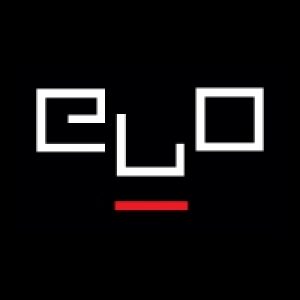SWITCH, the new media arts journal of the CADRE Laboratory for New Media of the School of Art and Design at San Jose State University has just published SWITCH_20: Transvergence. This is the first of a number of issues dedicated to themes of the ZeroOne Festival: A Global Festival of Art on the Edge and ISEA 2006 , August 5-13, 2006, in San Jose, California. SWITCH_20 features new writings, interviews, and works by Allucquere Rosanne (Sandy) Stone, Steve Dietz, Mark Finnern, Peter Haley, Sally Jane Norman, Nikki Stott, Dr. Roula Svorou, and the SWITCH Editorial Team.
M/C Media and Culture: ‘print’
M/C Media and Culture has just released its latest issue, entitled ‘print’, edited by Glen Thomas and Jaz Choi. The issue gathers eight essays that examine the relations between print culture and new media forms. The featured article is Bethaney Turner’s “Information Age Guerillas: The Communication Strategies of the Zapatistas”.
Eliza Redux by Adrianne Wortzel and StudioBlue
Currently in the Turbulence Spotlight is the just-launched Eliza Redux. The project by by Adrianne Wortzel and StudioBlue at the Cooper Union features a physical robot that is accessible online in sessions that users can sign up for: “one who, having passed the Turing test with flying colors, thinks it is a human psychoanalyst and persists in offering online pseudo- psychoanalytic sessions.” As the announcement explains, “Peer consultation is available in the Reception Area as well as archived sessions and other reference materials.”
This human-robot interaction project is inspired by a very early electronic literature work, Joseph Weizenbaum’s 1964-1966 Doctor character, which ran on Weizenbaum’s Eliza system and allowed for text-based human conversation with a computer playing the role of a psychotherapist. The original Eliza/Doctor is widely considered to be the first interactive computer character. Janet Murray, writing in Hamlet on the Holodeck, refers to the first believable conversation with this system as “the moment in the history of the computer that demonstrated its representational and narrative power with the same startling immediacy as the Lumières’ train did for the motion picture camera.”
June on -empyre-: “we-blog” with abe linkoln, jimpunk, Chris Ashley, and Tom Moody
June’s moderated discussion on -empyre- hosts four artists whose work engages the medium of the weblog as a new area for artistic practice:
—jimpunk uses tools of dataculture to create cinematic, yet linguistically-based work that asserts computer control over the browser.
—Chris Ashley is an artist, writer and educator living and working in Oakland, California. His weblog includes html drawings as well as posts on art.
—Tom Moody is a visual artist based in New York. Documentation of his studio practice, as well as his digital animation, music, and writing appear regularly on his weblog, which was recently recommended along with 11 others in the Art in America article “Art in the Blogosphere”.
Subscribe to the discussion list by clicking on -empyre- .
June Topic on Writing and the Digital Life: The Darker Side of Human/Computer Interaction
June’s discussion topic on Writing and the Digital Life, Sue Thomas’ latest project in digital communities, is “The Darker Side of Human/Computer Interaction”. Join the conversation or just read the archived postings by visiting the Writing and the Digital Life home page.
Computers and Writing Online 2005, May 31st-June 14, 2005
Computers and Writing Online 2005, hosted by kairosnews, May 31-June 14, 2005, will feature a different online presentation each day on such topics as Wikipedia, networked archives, the future of MOOs, the web and student learning, weblogs as deictic systems, and “Feedback, Motivation, and Collectivity on del.icio.us”.
Computers and Writing 2005, June 16-19 2005
It’s not too late to register to attend Computers and Writing 2005 at Stanford University, June 16-19. This year’s conference features a keynote address by Stanford University Professor of English and Director of the Stanford Program on Writing and Rhetoric, Andrea Lunsford, who will speak on “Writing, Technologies, and the Fifth Canon”. In addition to workshops and town hall discussions, presenters from around the world will discuss a wide range of topics, from computer gaming and its use in the classroom to the use of technology as a rhetorical choice.
Turbulence Comp_05 Winners
The five winners of Comp_05 (the juried international net art competition of New Radio and Performing Arts | Turbulence) are quite interesting from the perspective of electronic literature.
Gothamberg (by Marek Walczak, et al.) “is a place to read, interact and exchange stories of lives in apartment buildings” that will enable “travel using various strategies to different parts of the structure, the stories unfolding between public, private and personal spaces.” Meanwhile Peripheral n°2 KEYBOARD (by Marika Dermineur, Khalil Bennis, et al.) “will explore writing and language by reflecting anew on the keyboard” and SWM05 (by Troy Innocent, Ollie Olson, et al) will create a “distributed embodiment” of a fictional(?) group “as musical-visual forms performed on mobile phones and other wireless communication devices.”
Finally, meme.garden (by Mary Flanagan and Daniel C. Howe) will use textual analysis to “introduce the concepts of temporality, space, and empathy into a computer-based search tool” while mimoSa (by Ricardo Ruiz, Alexandre Freire, Etienne Delacroix, et al.) will “record public stories (audio and film) using mobile phones and microphones and store them in a database, broadcast them in FM, and record them to CD; print telephone numbers and instructions on the streets and walls so that people passing by will be able to access the stories via their mobile phones; and make a web portal … to access both audio and video.”
Sue Thomas’ New Project: “Writing and the Digital Life”
Following her departure from trAce, Sue Thomas has launched a new online community project called “Writing and the Digital Life” . Sue’s first initiative for the project is a listserv with moderated monthly conversations that aim to explore “the impact of digital technologies upon writing and lived experience.” The first topic, ongoing during May, is “Technophobia”. Visit Writing and the Digital Life to join the list and read the archived postings.
